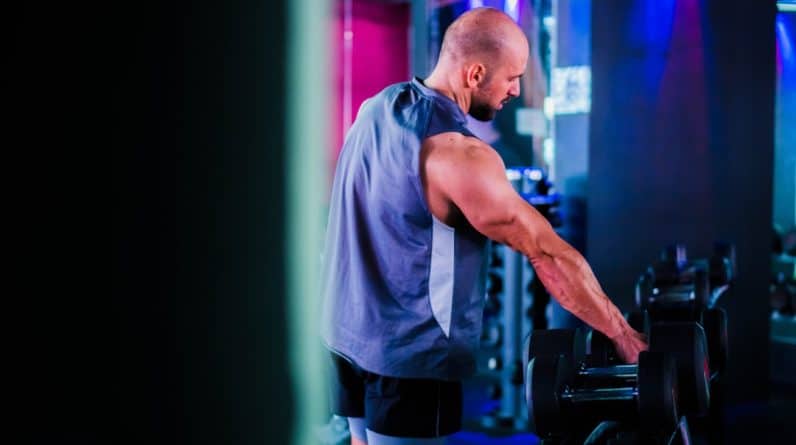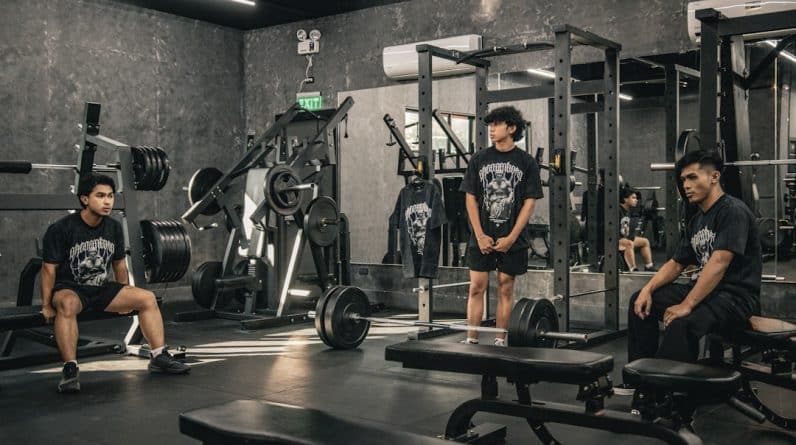
When embarking on the journey of establishing or upgrading your health club, the first step is to gain a clear understanding of your specific needs and goals. You must take the time to reflect on what you want to achieve with your facility. Are you aiming to attract a diverse clientele, or are you focusing on a niche market?
Perhaps your goal is to create a community hub for fitness enthusiasts, or maybe you want to offer specialized training programs. By defining your objectives, you can tailor your equipment selection and services to meet the expectations of your members. Moreover, it’s essential to consider the long-term vision for your health club.
Are you planning to expand in the future? Will you introduce new classes or services that require additional equipment? By anticipating these developments, you can make informed decisions about the types of machines and tools you invest in now.
This foresight will not only help you avoid unnecessary expenses down the line but also ensure that your health club remains relevant and appealing to your target audience.
Key Takeaways
- Understanding the health club’s needs and goals is crucial for selecting the right fitness equipment.
- Assessing space and budget constraints helps in making informed decisions about equipment purchases.
- Identifying the target audience and their fitness levels ensures that the equipment meets their needs.
- Researching and testing different brands and models helps in finding the best fit for the health club.
- Considering the versatility and multi-functionality of equipment allows for a diverse range of workouts.
Assessing the Space and Budget Constraints
Understanding Your Space Constraints
Once you have a clear understanding of your health club’s needs and goals, the next step is to assess the physical space available for your equipment. Space is a critical factor in determining what types of equipment you can include in your facility. You need to measure the dimensions of your workout areas, taking into account not just the equipment itself but also the flow of movement for members.
The Importance of a Well-Organized Space
A well-organized space can enhance the workout experience, making it more enjoyable and efficient for everyone. This is crucial in creating a positive atmosphere that will keep your members coming back.
Creating a Realistic Budget
Budget constraints are equally important. You may have grand ideas for your health club, but without a realistic budget, those dreams could remain just that—dreams. It’s crucial to create a detailed financial plan that outlines how much you can allocate for equipment purchases, installation, and maintenance. Consider not only the initial costs but also ongoing expenses such as repairs and replacements.
Making Strategic Decisions
By being mindful of both space and budget, you can make strategic decisions that will benefit your health club in the long run. This careful planning will help you create a successful and sustainable business that meets the needs of your members.
Identifying the Target Audience and Their Fitness Levels

Understanding who your target audience is will significantly influence your equipment choices. Are you catering to beginners looking to get fit, seasoned athletes seeking advanced training tools, or perhaps a mix of both? Each demographic has different needs and preferences when it comes to fitness equipment.
For instance, beginners may benefit from user-friendly machines that offer guided workouts, while experienced users might prefer more challenging options that allow for customization and progression. Additionally, consider the fitness levels of your potential members. If your health club is located in an area with a high population of older adults, investing in low-impact machines that are easy on the joints would be wise.
Conversely, if you’re targeting younger individuals who are more likely to engage in high-intensity workouts, incorporating functional training equipment like kettlebells and battle ropes could be beneficial. By aligning your equipment selection with the fitness levels and preferences of your target audience, you can create an inviting environment that encourages participation and fosters a sense of community.
Researching and Testing Different Brands and Models
With a clear understanding of your needs, space, budget, and target audience, it’s time to dive into researching different brands and models of fitness equipment. The market is flooded with options, each boasting unique features and benefits. To make an informed decision, you should take the time to read reviews, compare specifications, and understand what sets each brand apart from its competitors.
Look for reputable manufacturers known for their quality and reliability. Testing equipment before making a purchase is also crucial. If possible, visit showrooms or attend fitness expos where you can try out various machines firsthand.
Pay attention to how they feel during use—are they comfortable? Do they provide adequate support? Additionally, consider reaching out to other health clubs or fitness professionals for recommendations based on their experiences with specific brands.
This research phase will empower you to make choices that align with your health club’s goals while ensuring member satisfaction.
Considering the Versatility and Multi-functionality of Equipment
In today’s fitness landscape, versatility is key. As space may be limited in your health club, investing in multi-functional equipment can maximize your offerings without overcrowding your facility. Look for machines that serve multiple purposes or can be easily adjusted for different exercises.
For example, a cable machine can be used for strength training, functional movements, and rehabilitation exercises—all in one piece of equipment. Moreover, consider incorporating free weights alongside machines. Free weights allow for a broader range of motion and can be used in various ways to target different muscle groups.
By providing versatile options, you not only cater to a wider audience but also encourage creativity in workouts. Members will appreciate having access to equipment that allows them to explore different training styles and keep their routines fresh and engaging.
Evaluating the Durability and Maintenance Requirements

Durability is a critical factor when selecting fitness equipment for your health club. You want to invest in machines that can withstand heavy use over time without compromising performance or safety. Look for equipment made from high-quality materials that are designed for commercial use rather than home use.
This distinction often means better construction and longer lifespans. In addition to durability, consider the maintenance requirements of each piece of equipment. Some machines may require regular servicing or specific cleaning protocols to keep them in optimal condition.
Understanding these needs upfront will help you plan for ongoing maintenance costs and ensure that your equipment remains safe and functional for members. A well-maintained facility not only enhances member satisfaction but also reflects positively on your health club’s reputation.
Seeking Professional Advice from Fitness Equipment Experts
Navigating the world of fitness equipment can be overwhelming, especially with so many options available. Seeking professional advice from fitness equipment experts can provide valuable insights that help streamline your decision-making process. These professionals often have extensive knowledge about the latest trends in fitness technology and can guide you toward equipment that aligns with your goals.
Consider consulting with fitness consultants or industry specialists who can assess your specific needs and recommend suitable options based on their expertise. They may also provide insights into emerging trends or innovative products that could set your health club apart from competitors. By leveraging their knowledge, you can make informed choices that enhance the overall experience for your members while ensuring that your investment pays off in the long run.
Creating a Diverse and Well-rounded Equipment Selection for Varied Workouts
Finally, as you finalize your equipment selection, aim to create a diverse and well-rounded offering that caters to various workout preferences and goals. A balanced mix of cardio machines, strength training equipment, free weights, and functional training tools will appeal to a broader audience and encourage members to explore different workout styles. Consider incorporating specialized equipment such as resistance bands, stability balls, or plyometric boxes to enhance group classes or personal training sessions.
Additionally, offering options for both high-intensity workouts and low-impact exercises ensures that all members feel welcome regardless of their fitness levels. By curating a diverse selection of equipment, you foster an inclusive environment where everyone can find something that resonates with their fitness journey. In conclusion, establishing a successful health club requires careful consideration of various factors—from understanding your goals and assessing space constraints to selecting versatile equipment and seeking expert advice.
By taking these steps thoughtfully, you can create an inviting space that meets the diverse needs of your members while promoting a culture of health and wellness within your community.
When considering how to choose the right type of equipment and machines for your health club workouts, it’s important to also think about the different age groups that may be using the facilities. This article on fitness for different age groups provides valuable insights on how to cater to the specific needs and preferences of various demographics. Understanding the safety precautions that should be taken while working out at a health club is also crucial. For more information on this topic, check out the article on what safety precautions should I take while working out at a health club. Additionally, if you’re interested in exploring virtual or online health club memberships, there are various options available. Learn more about this by reading the article on what options exist for virtual or online health club memberships.
FAQs
What factors should I consider when choosing equipment and machines for my health club workouts?
Consider factors such as the space available, the specific needs and goals of your members, the budget, the quality and durability of the equipment, and the variety of exercises that can be performed with the equipment.
What are some essential types of equipment and machines for a health club?
Essential types of equipment and machines for a health club include cardio machines (treadmills, ellipticals, stationary bikes), strength training machines (chest press, leg press, lat pulldown), free weights (dumbbells, barbells), functional training equipment (kettlebells, resistance bands, stability balls), and accessories (exercise mats, foam rollers).
How can I ensure that the equipment and machines I choose are safe and effective for my members?
Ensure that the equipment and machines meet safety standards, are properly maintained and inspected regularly, and come with clear instructions for use. It’s also important to provide proper training and supervision for members to use the equipment safely and effectively.
What are some popular trends in health club equipment and machines?
Some popular trends in health club equipment and machines include interactive and connected fitness equipment, functional training equipment, equipment with virtual reality and gamification features, and equipment designed for high-intensity interval training (HIIT) workouts.





